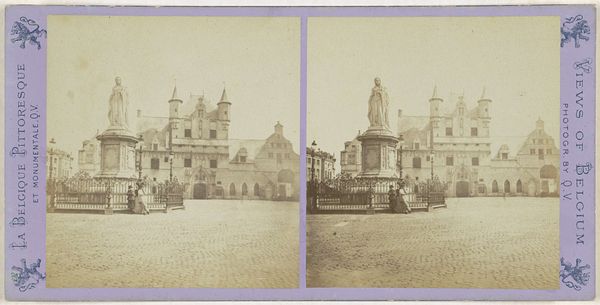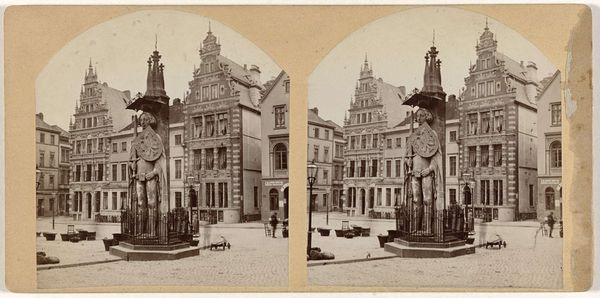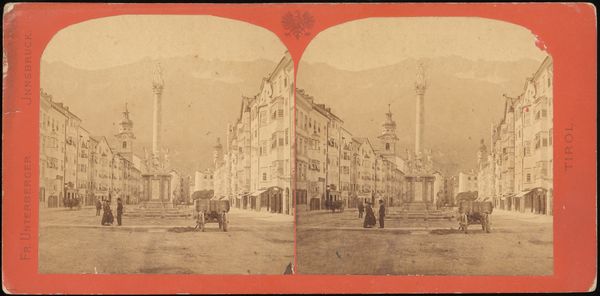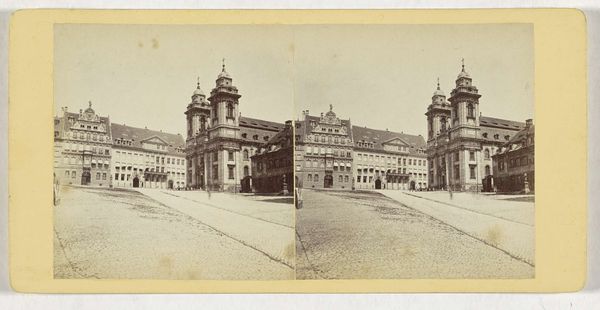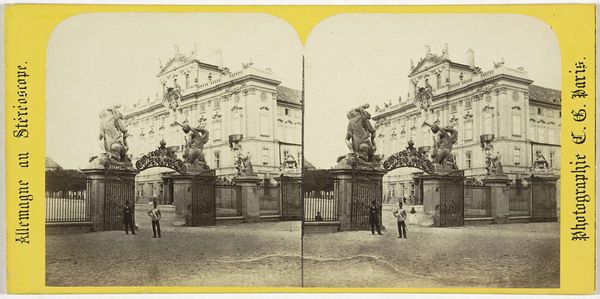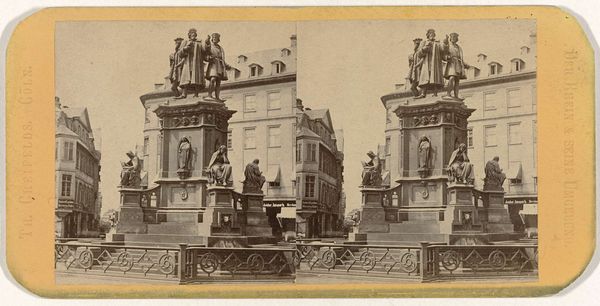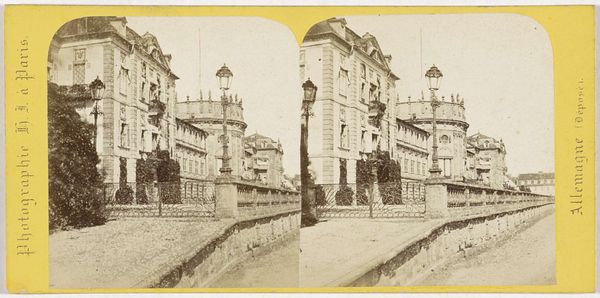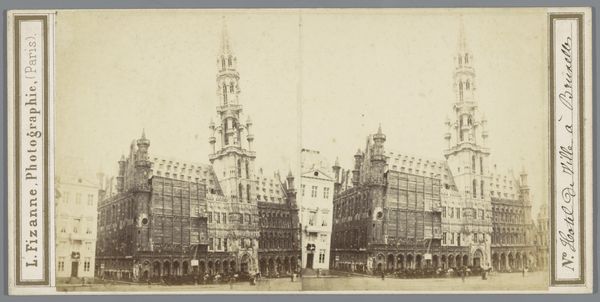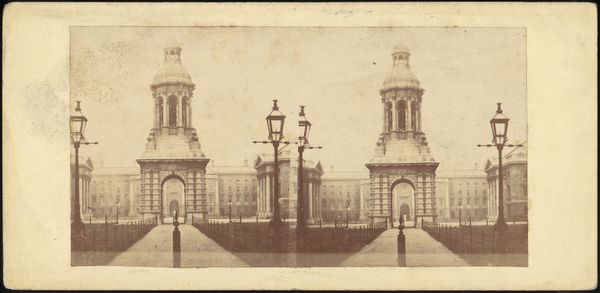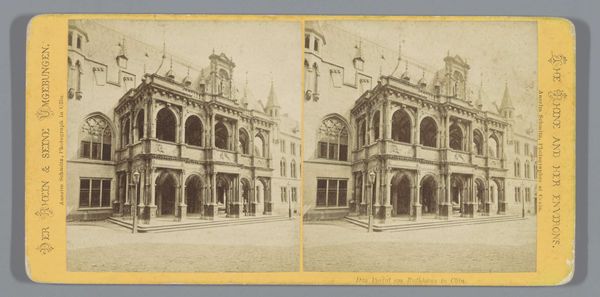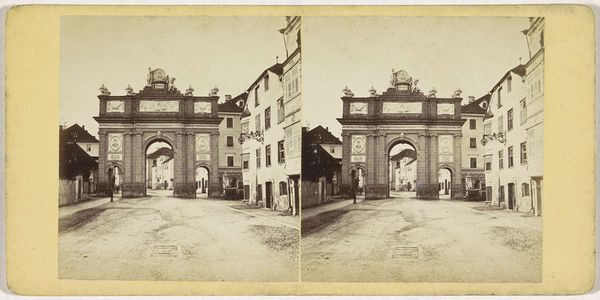
Dimensions: height 85 mm, width 174 mm
Copyright: Rijks Museum: Open Domain
Here we see Charles Gaudin’s stereo photograph of the Dreifaltigkeitssäule, or Trinity Column, in Linz. It is an artifact of 19th-century Europe, a time marked by both technological advancement and persistent social hierarchies. This column, erected in the early 1700s, embodies a convergence of religious belief, artistic expression, and civic identity. Conceived in the aftermath of plague epidemics, such columns symbolized a plea for divine protection, a sentiment deeply resonant in communities facing recurrent crises. As you look closer, consider its function beyond a religious symbol. It also operated as a display of power, a visual assertion of the Church’s and the Emperor’s authority in the urban space. The photograph, taken centuries later, captures this monumentality, but it also invites us to reflect on the ever-evolving interpretations of public symbols. What does it mean to view such a structure today, through a lens of secularism and diverse cultural values? In its presence, we contemplate not only the past, but also the ongoing negotiation of history, faith, and identity in our shared spaces.
Comments
No comments
Be the first to comment and join the conversation on the ultimate creative platform.
